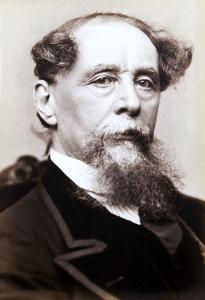The writing style of
Charles Dickens
Charles Dickens
1812-1870
English novelist and social critic who created some of the world's best-known fictional characters and is regarded as the greatest novelist of the Victorian era.
Charles Dickens, one of the literary giants of the Victorian era, is renowned for his vivid storytelling and profound social commentary. His writing style is distinctive, marked by a blend of humor, satire, and drama, and it is characterized by its energetic prose, with a flair for the dramatic and a keen eye for detail.
Dickens’s sentence structures are notably varied, often complex, and intricately woven with multiple clauses. He frequently employs long sentences that are packed with detail, creating a dense, layered effect that can evoke a strong sense of place or character. This complexity does not just serve a decorative purpose; it mirrors the complexity of his themes and the intricacies of the human experiences he depicts.
His choice of words is equally deliberate. Dickens has a penchant for using a rich and expansive vocabulary, including archaic terms and phrases, which lends a particular flavor to his narrative voice. This choice of language not only enhances the historical setting of his novels but also helps in creating a particular mood or atmosphere. His skillful use of irony and satire is often embedded within these choices, critiquing societal norms and behaviors without alienating his readers.
Dickens is also known for his masterful use of dialogue. His characters are brought to life through their distinct voices, which are crafted through unique syntax and idiomatic expressions. This not only differentiates his characters but also serves as a tool for social and psychological commentary.
Structurally, Dickens often employs a serial format in his novels, which were originally published in magazines in serial form. This episodic structure influences his writing style, often leading to cliffhangers at the end of chapters and a strong rhythmic pace to keep readers engaged and coming back for more.
Dickens’s writing style is a blend of theatricality, linguistic richness, and narrative depth. His ability to weave complex sentences, his strategic use of vocabulary, and his innovative use of structure all contribute to the enduring appeal of his works, making his novels not just stories but rich, immersive experiences for the reader.
